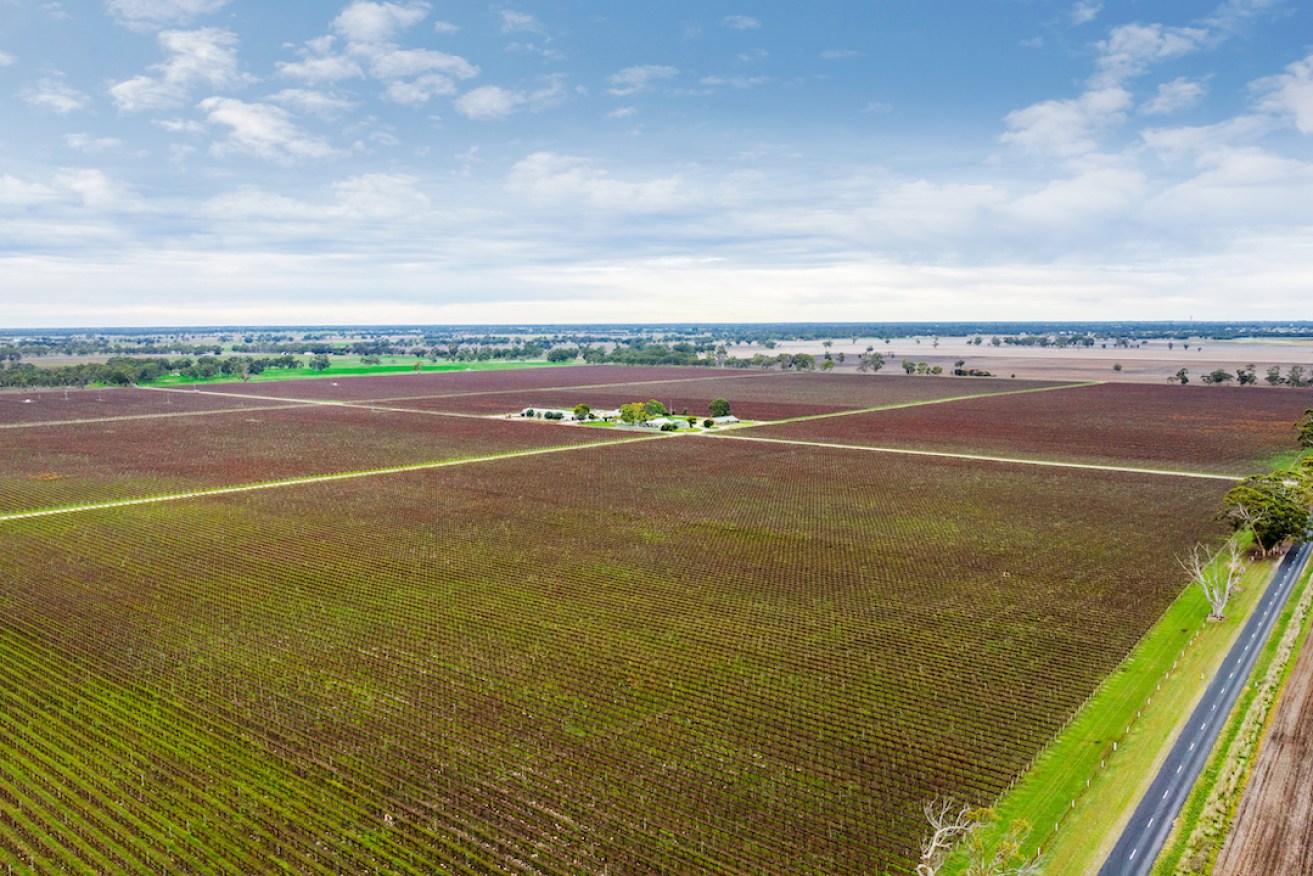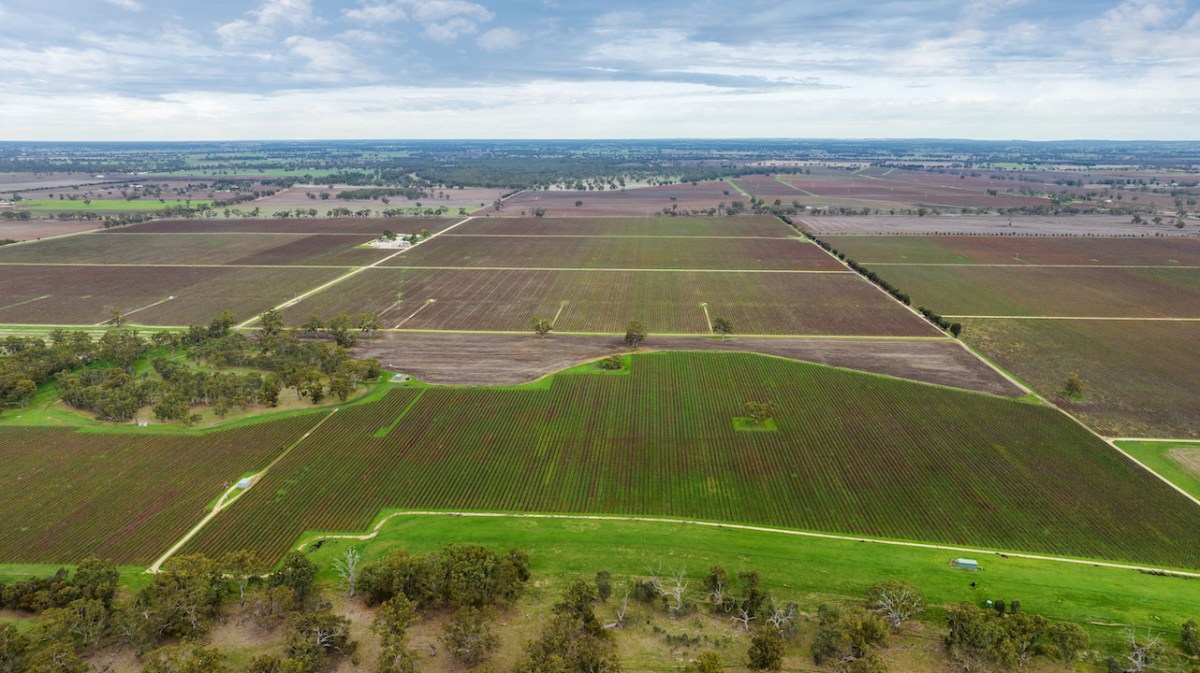Treasury Wine’s Bordertown vineyard to hit the market amid export downturn
A vineyard portfolio on the South Australian border currently held by wine producer Treasury Wine Estates is set to hit the market and could sell for more than $9 million.


The vineyard could sell for more than $9 million.
Situated near Bordertown in South Australia’s east, the commercial vineyard was the first to be established in the area back in 1989 by luxury vintner Penfolds, and spans approximately 487.81 hectares.
Of that, the total vineyard area comes to about 374.16 hectares, making it one of the region’s largest and most prominent. Accordioning to brokers Colliers, the land could attract a rate of around $25,000 per planted hectare.
Though Colliers could not disclose the identity of its client, images provided match that of existing buildings on the Penfolds plot.
According to the brokers, the vineyard produces premium wine grape varietals including Cabernet Sauvignon, Chardonnay, Merlot, Shiraz and Tempranillo with a 10-year average production of approximately 3,600 tonnes.
The proposed sale of the land comes two weeks after the listed winemaker said it was reviewing its “cheaper” offerings due to changing conditions and a challenging outlook in the UK and Australia for that budget market.
Further, inflation means the cost of packaging material is expected to put upward pressure on Treasury Wine’s cost of goods in 2023/24.
It also comes amid a “red wine glut” in South Australia, caused by Chinese tariffs and weak international markets, which may force producers to dump thousands of tonnes of grapes.

Speaking to InDaily, South Australian Wine Industry Association (SAWIA) chief executive officer Brian Smedley said winemakers in South Australia that were exposed to the loss of the Chinese market would now be considering whether they can satiate other markets with their grapes.
“Having lost [the Chinese] market – we’re now two-and-a-half years since that market collapsed – there will be people who will have made decisions about whether they can diversify those markets; in other words, go to other markets with the wine that they had,” Smedley said.
“If those people are unable to do that then there may be a situation where people start to divest.
“There is a significant change with no other market being able to take the supply that China was taking, so if that’s the case then you would be in an oversupply situation.”
Though Smedley said the true impact of the red wine glut on the current vintage won’t be evident until July, the SAWIA CEO noted that “something needs to correct for us to have a better outlook”.
“That is we actually cut back our supply, and a number of people are talking about mothballing their vineyards, generating lower yields and even taking areas out of production,” he said.
“If we assume that the tariffs came off completely, the market has changed in China; they are now drinking less alcohol, drinking less wine and our market share has been taken by somebody else.
“So when you look at that, it’s going to be a lot harder to achieve sales in China. Not impossible, but a lot harder, and we potentially will not get back to the level of sales that we had when we left.”
For those not game enough to enter the winemaking industry at this time, Colliers’ Nick Dean who was appointed to sell the vineyard said the land presented “opportunities for potential redevelopment into alternative horticultural or agricultural pursuits”.
“The property’s prime location, extensive infrastructure, and ample land area make it an enticing prospect for investors with diverse agricultural interests,” Dean said.
Colliers’ Tim Altschwager added that the land represented “an exceptional chance to acquire a large-scale, commercial vineyard in the Bordertown wine region, a highly regarded viticultural area in South Australia”.
“It is a significant vineyard by any measure,” he said.
“Imagine, should the Chinese market reopen, then large-scale commercial vineyards, such as Bordertown Vineyards, assume even greater importance.”
Beyond the rows of grapes, Colliers is spruiking the property’s three residences, a “well-equipped” administration centre, extensive shedding and workshop facilities, and maintenance areas for machinery and equipment.




